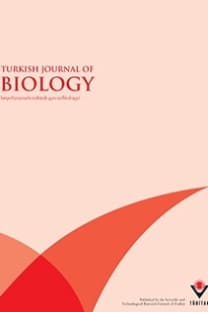Evaluation of nested PCR method for diagnosis of meningitis due to Neisseria meningitidis and Haemophilus influenzae
Key words: Bacterial meningitis, Neisseria meningitidis, Haemophilus influenzae, PCR, nested PC
Evaluation of nested PCR method for diagnosis of meningitis due to Neisseria meningitidis and Haemophilus influenzae
Key words: Bacterial meningitis, Neisseria meningitidis, Haemophilus influenzae, PCR, nested PC,
___
- 1. Dhamija RM, Jaideep B. Bacterial meningitis (meningoencephalitis): a review. JIACM 7: 225−235, 2006.
- 2. Kristiansen F, Ask E, Jenkins A et al. Rapid diagnosis of meningococcal meningitis by polymerase chain reaction. Lancet 337: 1568−1579, 1991.
- 3. Ni NH, Knight Al, Cartwright K et al. Polymerase chain reaction for diagnosis of meningococcal meningitis. Lancet 340: 1432−1434, 1992.
- 4. Radstrom P, Bachman A, Qian N et al. Detection of bacterial DNA in cerebrospinal fluid by an assay for simultaneous detection of Neisseria meningitides, Haemophilus influenzae, and streptococci using semi nested PCR strategy. J Clin Microbiol 32: 2738−2744, 1994.
- 5. Saravolatz LD, Manzor O, VanderVelde N et al. Broad range bacterial polymerase chain reaction for early detection of bacterial meningitis. Clin Infect Dis 36: 40−45, 2003.
- ISSN: 1300-0152
- Yayın Aralığı: 6
- Yayıncı: TÜBİTAK
Mehmet NİYAZ, Özer Aylin GÜRPINAR, Serdar GÜNAYDIN, Mehmet Ali ONUR
Muhsin KONUK, Tuğba ŞAHİN, İbrahim Hakkı CİĞERCİ
Purification and properties of an endoglucanase from Aspergillus niger VTCC-F021
Thi Hoa PHAM, Dinh Thi QUYEN, Ngoc Minh NGHIEM
Identification and isolation of salt-stress-responsive transcripts from Gossypium arboreum L.
Muhammad Naveed SHAHID, Adil JAMAL, Bushra RASHID, Beenish AFTAB, Tayyab HUSNAIN
Utilization of gold nanostructures in biomedical applications
Gamze TAN, Mehmet Ali ONUR, Necdet SAĞLAM
A comparison of major taste- and health-related compounds of Vaccinium berries
Jasminka MILIVOJEVIC, Vuk MAKSIMOVIC, Jelena DRAGISIC MAKSIMOVIC
Biological screening of various medicinal plant extracts for antibacterial and antitumor activities
Fatma PEHLİVAN KARAKAŞ, Arzu YILDIRIM, Arzu TÜRKER
Dipeptidyl peptidase IV production by solid state fermentation using alternative fungal sources
Gaye ÖNGEN, Sayıt SARGIN, Özlem ÜSTÜN, Ceren KUTLU, Mesut YÜCEL
Batool EJAZ, Zahoor Ahmad SAJID, Faheem AFTAB
Effect of cell-conditioned media on biomass production of Leishmania parasites
Melahat BAGIROVA, Rabia ÇAKIR KOÇ, Adil ALLAHVERDİYEV, Melike ERSÖZ
